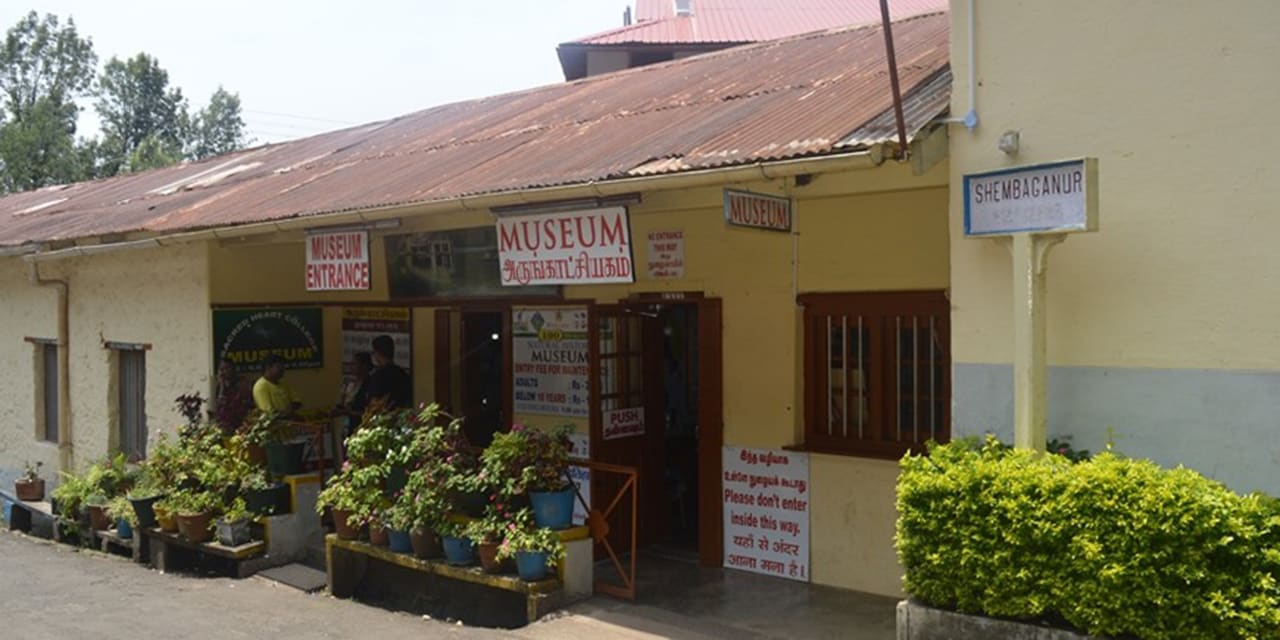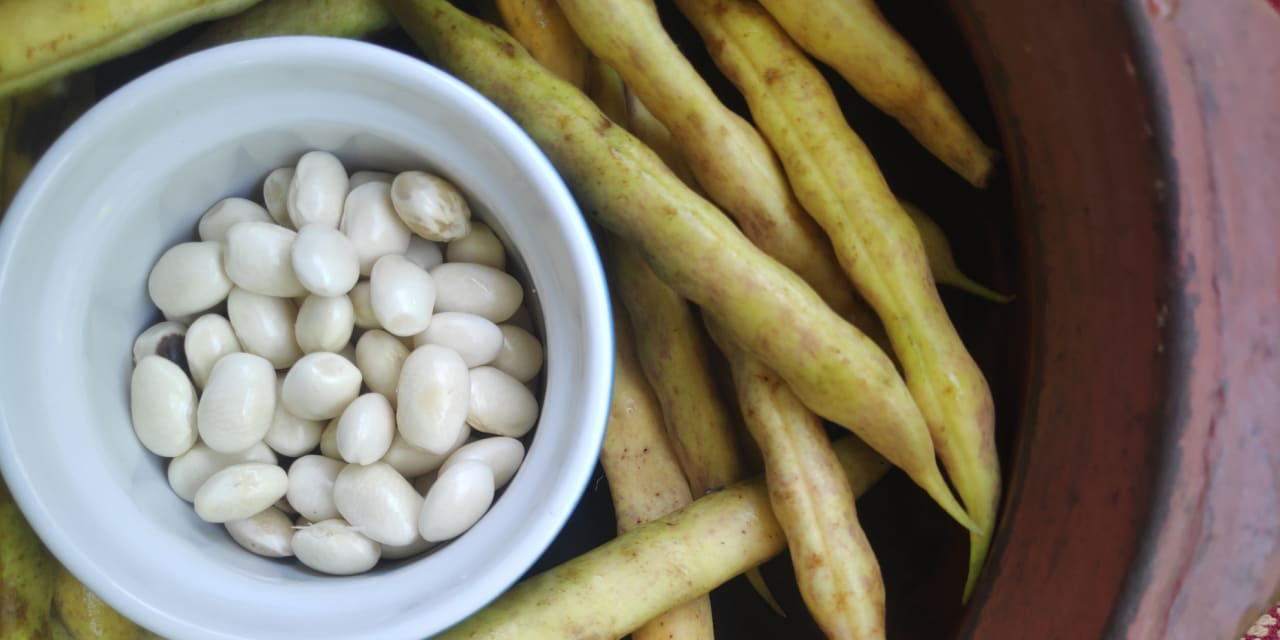When the Shenbaganur Museum of Natural History first opened in 1910 (established by the Sacred Heart College of Kodaikanal), a newly constructed Ghat Road had just opened for regular traffic, and wildlife was still plentiful in Kodaikanal. Panthers could be spotted around the lake. Bears, tigers, and other animals roamed the thick forests around town, so plentiful in number that large areas — ‘Tiger Shola’, ‘Bear Shola’ and ‘Ibex Point’— were named after them.
Today, there are more than 5000 species of local wildlife exhibited in the Shenbaganur museum, not all of which exist in the wild any more, according to Father Stanislaus Rathinam, caretaker of the museum. ‘Occasionally, a lorry or truck driver would hit an animal and they would bring it here,’ he says. ‘This is how some of the first exhibits of the museum came to be, including that bearskin you see on the wall, which was given to us in 1947. And that skeleton is from a tiger that was shot by the brothers at the seminary.’

For the past 12 years, the museum has been under his watch, and he summarises its contents with careful attention to detail. There are more than 200 butterfly species from the Palani Hills on display — beautiful, fragile, and curiously formed — including the great yellow minos, the common map and the oakleaf. Over 200 exhibits of local birds can also be found here, such as the red-whiskered bulbul, the black bulbul and the Travancore laughing thrush, supplemented by a collection of bird eggs — white, blue, and speckled. The museum has a considerable collection of mammals, some of which are displayed in a diorama, the focal point in the building. Pride of place goes to the gaur, or Indian bison, of course. Other animals endemic to the area, like the sambar deer, otter, jackal, flying squirrel and civet, are exhibited as well. Skins of sloth bears, tigers (and, curiously, that of an Alsatian dog) hang stretched on the walls.
Visiting this museum is a rite of passage for those who have grown up in Kodai. As a local activity, it’s right up there beside seeing a bison in the forest, walking around the lake, or complaining about tourists
Visiting this museum is a rite of passage for those who have grown up in Kodai. As a local activity, it’s right up there beside seeing a bison in the forest, walking around the lake, or complaining about tourists. Many locals visit the museum as children, and as adults, we point out the turning for the building to friends when we drive up and down the ghat.
As a young student, I remember being driven down to the museum in our yellow school bus. The building is 20 feet high and 2200 feet long, constructed from stone and red mud and painted yellow. The roof is covered with British iron sheets, supported by wooden beams.

Indoors, a distinctive, musty smell lingers in the air. Old wood-and-glass display cases lined the walls, stretching up to the ceiling, carrying inside them an immaculate inventory of Kodai’s birds and beasts, their skeletons, feathers and skins, as well as jar upon jar of snakes suspended in alcohol — ghosts of their former selves. The butterflies and beetles, on the other hand, were almost alive with colour. To a little girl in pigtails, the museum was as charming and magical as anything in fiction.
Revisiting the museum 30 years later is a markedly different affair. As an adult, the stories the museum tells are a lot more disturbing.
In the 1920s, Father Stanislaus tells us, the staff and students of the Sacred Heart College served as the museum’s first specimen hunters, under the direction of Father A. Anglade. They combed the Palani Hills and sholas with nets, collecting insects, and birds, becoming such a fixture around town that they were locally dubbed ‘Butterfly Squad’ and ‘Bird Squad’.

The collection grew over the next few decades, especially the number of snakes, including pythons and rat snakes. ‘They were hit by cars and brought here,’ explains Father Stanislaus. ‘Father Anglade stuffed and seasoned them for all eternity.’


‘I was surprised to see the variety of animals and birds,’ comments Vibhas Venkatram, 34, co-founder of the music school Yellow Brick Studio. Visiting from Bangalore, he recently stopped by the museum to learn more about the wildlife in the area. ‘While I have seen bison and even porcupine quills when I’ve been out hiking, I had no idea that other animals like foxes and leopards have been seen here.’
They no longer are. Many of the species displayed in the Shenbaganur museum are not easily spotted in the sholas. In fact, most locals would be surprised to hear that at one time, you could see exotic-looking hornbills around Berijam. ‘Excepting the jungle hen and the Indian cuckoo, all the rest of these birds are extinct,’ Father Stanislaus says, pointing to a large display.
‘And excepting bison, deer, boar, porcupines, peacocks, and flying squirrels, you will not be able to see most of the mammals you see on display here in the forest any more.’
An hour spent in the museum is abundant cause for alarm. There are fewer birds, butterflies, tigers and other species than there used to be, even if you are looking at things on the scale of a few decades, say most experts. Assistant Professor, IISER-Tirupati, VV Robin, who works with the bird ecology research group Shola Sky Islands, points out that because the extent of grassland loss in Kodaikanal is tremendous, ‘many grassland species may have reduced in number’. As there isn’t enough data — a gap that most scientists and experts point to in Kodai and the surrounding areas in the Palani Hills — it is hard to fully appreciate the extent of the depreciation. ‘We quantified this for one bird species, the Nilgiri pipit,’ says Robin, who pointed us to this paper. ‘In the paper it says that the number of these birds is low in Kodai, but they are not yet extinct. In the eastern part of the Nilgiris, they are already locally extinct.’
There are fewer birds, butterflies, tigers and other species than there used to be, even if you are looking at things on the scale of a few decades, say most experts
The survival of species is, of course, perhaps the most acute existential problem in the world, but it hits home when you are talking about your own backyard. And the exhibits underscore the urgency of taking action today to keep Kodai’s existing wildlife from fading away.
‘Most people today will never know the thrill of seeing a tiger or a bear in Kodai, just like decades from now locals might not ever see wild boar or flying squirrels in these hills,’ says Father Stanislaus.
‘The museum represents the essence of what Kodai is,’ says my sister, Nadisha Sagar. ‘It brings to life the stories that our grandparents used to tell us. So for locals, it reminds us to preserve every bit of Kodai that’s left.’



